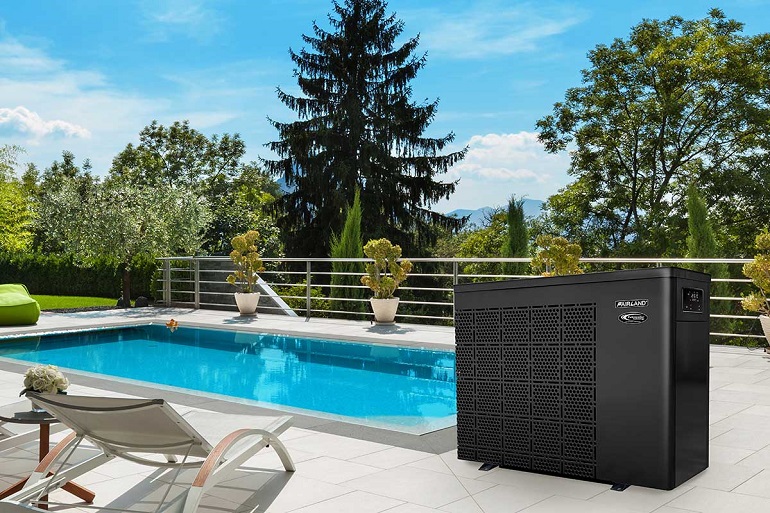Summer can never last too long, even in warm countries such as Australia. While there are countless awesome activities to do throughout the entire season, one of the best that comes to mind is splashing in a relaxing swimming pool in the comfort of your own home. However, summer does not last forever, which is why many pool owners have opted to get a heating pump for their pool so that the water will always be fine even in the colder seasons. On top of that, adding some cool LED lights can make the pool feel that much more personal and a place you’ll not want to leave at all.

While some might not view a heat pump as a necessity, there is a unique advantage to owning one – you’ll get to enjoy your swimming pool all year round! Once you do take the plunge and start looking at the various heat pumps online, there are a few key things to keep in mind.
Energy Efficiency
It is important to note that most heat pumps for sale in Australia are built to be energy efficient. However, they’ll still contribute to 16% of the energy bills in the household, and in some cases, up to 30%, depending on the factors surrounding the swimming pool. So, finding the most efficient pump within your budget range should certainly be your priority.
With the new Energy Rating Labelling Program for Pool Pumps, each star awarded to a pump means a 25% increase in efficiency from the previous star. So, the more stars, the less energy the pump will require to run. This information can come in handy when looking at some of the highly efficient swimming pool heat pumps Australia stores offer, such as the AT170 and AT190.
Speed Settings
One of the most important factors to consider when looking for heat pumps online is their speed settings. That’s linked to energy efficiency as well, because the faster the pump, the more you’ll save on power. There are three types of speed settings to look out for, and those are single speed, dual speed, and variable speed.
Single Speed Pumps
Single-speed pumps used to be the most common type of heating pump type due to their ease of use because their speed doesn’t need to be adjusted at all. However, that means that you might have to waste more power due to that setting as the speed is set on High by default.
Dual Speed Pumps
These types of pumps have two settings to choose from – High and Low speed. These settings allow you to save on energy when the pool is not being used.
Variable Speed Pumps
As the name implies, you can personally set the speed to these pumps however you choose. They have permanent magnetic motors so they’re much more efficient than other pumps, which also makes them more expensive. However, in the long run, they prove to be much more energy efficient by a significant margin.
Your Swimming Pool’s Size

Another critical factor to consider when getting a pool heat pump is the size of your swimming pool. As there is no one size fits all pump, you need to be aware of the exact dimensions of your swimming pool so that you’ll be able to calculate the flow rate per hour.
To do so, you need to calculate the size of your swimming pool in gallons and then divide that number by 8, which is the standard amount of hours it takes a heat pump to complete one cycle. Then, you divide that number by 60, as in minutes, and that final number is the minimum flow rate you should consider for your pump, as calculated by Gallons Per Minute (GPM).
For example, if your pool size is 50,000 gallons, when you divide that by 8, you get 6,250, which you then divide by 60 and get 104. That means when choosing a pump, the minimum GPM you should be looking for is 104 so that you’ll have a safe and sanitary pool.
Other Features

Not all pumps are built equal, and in addition to energy efficiency, speed and pool size, some of these features might change your approach when you’re looking for a heat pump online.
- Horsepower – Simply put, this feature highlights the speed at which the pump can cycle the water. The higher this number is, the shorter the time you’ll potentially need it running, thus saving you energy.
- Pump position – Some pumps are built for inground pools, and others are for above-ground ones. The ones for inground pools are usually placed above the water level, so they have the capacity to lift the water vertically.
- Electrics – Always be mindful whether the pump runs on 110 or 220 Volts. Even if you find the ideal pump, it will be a deal-breaker if you can’t even plug it into an outlet.
- Water Features – Not all pumps are strictly utilitarian, as some allow you to add an element of décor to your pool. They can come with water features such as a pool fountain, or maybe a waterfall, water jets, and even a bubbler. They might not directly contribute to the pump’s basic functions, but they can definitely add to the ambience of the whole swimming pool experience.
A pool heat pump is no doubt a vital piece of equipment that might make or break the entire experience. It can be a daunting task to compare the different swimming pool heat pumps Australia wide, which is why you should always inform yourself as best you can so that you’ll make the best possible decision. When looking at the heat pumps for sale online, always remember what the government says about them.

